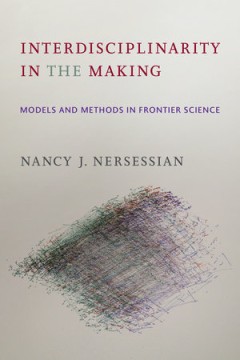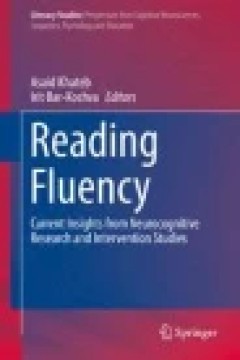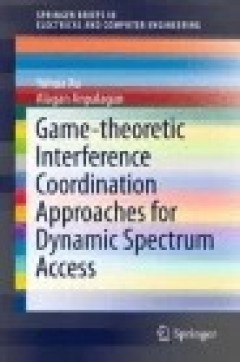Filter by

Psychoacoustic Foundations of Major-Minor Tonality
- Edition
- -
- ISBN/ISSN
- 9780262377362
- Collation
- -
- Series Title
- -
- Call Number
- -
- Edition
- -
- ISBN/ISSN
- 9780262377362
- Collation
- -
- Series Title
- -
- Call Number
- -

The Blind Spot: Why Science Cannot Ignore Human Experience
- Edition
- -
- ISBN/ISSN
- 9780262377744
- Collation
- -
- Series Title
- -
- Call Number
- -
- Edition
- -
- ISBN/ISSN
- 9780262377744
- Collation
- -
- Series Title
- -
- Call Number
- -

The Neurocognitive Theory of Dreaming: The Where, How, When, What, and Why of…
A comprehensive neurocognitive theory of dreaming based on the theories, methodologies, and findings of cognitive neuroscience and the psychological sciences. G. William Domhoff's neurocognitive theory of dreaming is the only theory of dreaming that makes full use of the new neuroimaging findings on all forms of spontaneous thought and shows how well they explain the results of rigorous quan…
- Edition
- Ed. 1
- ISBN/ISSN
- 9780262370882
- Collation
- -
- Series Title
- -
- Call Number
- 611.8 DOM n

Interdisciplinarity in the Making: Models and Methods in Frontier Science
A cognitive ethnography of how bioengineering scientists create innovative modeling methods. In this first full-scale, long-term cognitive ethnography by a philosopher of science, Nancy J. Nersessian offers an account of how scientists at the interdisciplinary frontiers of bioengineering create novel problem-solving methods. Bioengineering scientists model complex dynamical biological system…
- Edition
- Ed. 1
- ISBN/ISSN
- 9780262372275
- Collation
- -
- Series Title
- -
- Call Number
- 660.6 NER i

The Secret Life of Literature
An innovative account that brings together cognitive science, ethnography, and literary history to examine patterns of “mindreading” in a wide range of literary works. For over four thousand years, writers have been experimenting with what cognitive scientists call “mindreading”: constantly devising new social contexts for making their audiences imagine complex mental states of chara…
- Edition
- Ed. 1
- ISBN/ISSN
- 9780262367653
- Collation
- -
- Series Title
- -
- Call Number
- 305.8 ZUN s

Constraints of Agency Explorations of Theory in Everyday Life
This book explores the basic concept of agency and develops it further in psychology using it to better understand and explain psychological processes and behavior. More importantly, this book seeks to put an emphasis on the role of agency in four distinct settings: history of psychology, neuroscience, psychology of religion, and sociocultural theories of co-agency. In Volume 12 of the Annals o…
- Edition
- -
- ISBN/ISSN
- 9783319101309
- Collation
- xv, 276 pages
- Series Title
- -
- Call Number
- 153
Reasoning and Public Health: New Ways of Coping with Uncertainty
This book argues that in order to be truly effective, public health must embrace a group of reasoning strategies that have traditionally been characterized as informal fallacies. It will be demonstrated that these strategies can facilitate judgements about complex public health issues in contexts of uncertainty. The book explains how scientists and lay people routinely resort to the use of the…
- Edition
- 1
- ISBN/ISSN
- 978-3-319-15013-0
- Collation
- XIII, 242
- Series Title
- -
- Call Number
- 153

Affective Touch and the Neurophysiology of CT Afferents
CT afferents are receptors in mammalian hairy skin that fire action potentials when the skin is touched lightly which makes them particularly important in affective touch. Traditionally neuroscientific research has focused on more discriminative and haptic properties of touch that are mediated by large myelinated afferents and the coding properties and functional organization of unmyelinated C…
- Edition
- 1
- ISBN/ISSN
- 978-1-4939-6418-5
- Collation
- XIII, 430
- Series Title
- -
- Call Number
- 150 AFF a

Reading Fluency: Current Insights from Neurocognitive Research and Interventi…
The book is dedicated to the blessed memory of Prof. Zvia Breznitz, whose groundbreaking research has made a tremendous impact on the understanding of fluency in reading. The book presents a multidimensional perspective of recent research and reviews on fluency in reading. The first part presents recent brain-imaging findings from studies into the neurobiological basis of reading, as well as co…
- Edition
- 1
- ISBN/ISSN
- 978-3-319-30478-6
- Collation
- XV, 161
- Series Title
- Literacy Studies
- Call Number
- 407

Game-theoretic Interference Coordination Approaches for Dynamic Spectrum Access
Written by experts in the field, this book is based on recent research findings in dynamic spectrum access for cognitive radio networks. It establishes a game-theoretic framework and presents cutting-edge technologies for distributed interference coordination. With game-theoretic formulation and the designed distributed learning algorithms, it provides insights into the interactions between mul…
- Edition
- 1
- ISBN/ISSN
- 978-981-10-0022-5
- Collation
- XI, 93
- Series Title
- SpringerBriefs in Electrical and Computer Engineering
- Call Number
- 794
 Computer Science, Information & General Works
Computer Science, Information & General Works  Philosophy & Psychology
Philosophy & Psychology  Religion
Religion  Social Sciences
Social Sciences  Language
Language  Pure Science
Pure Science  Applied Sciences
Applied Sciences  Art & Recreation
Art & Recreation  Literature
Literature  History & Geography
History & Geography